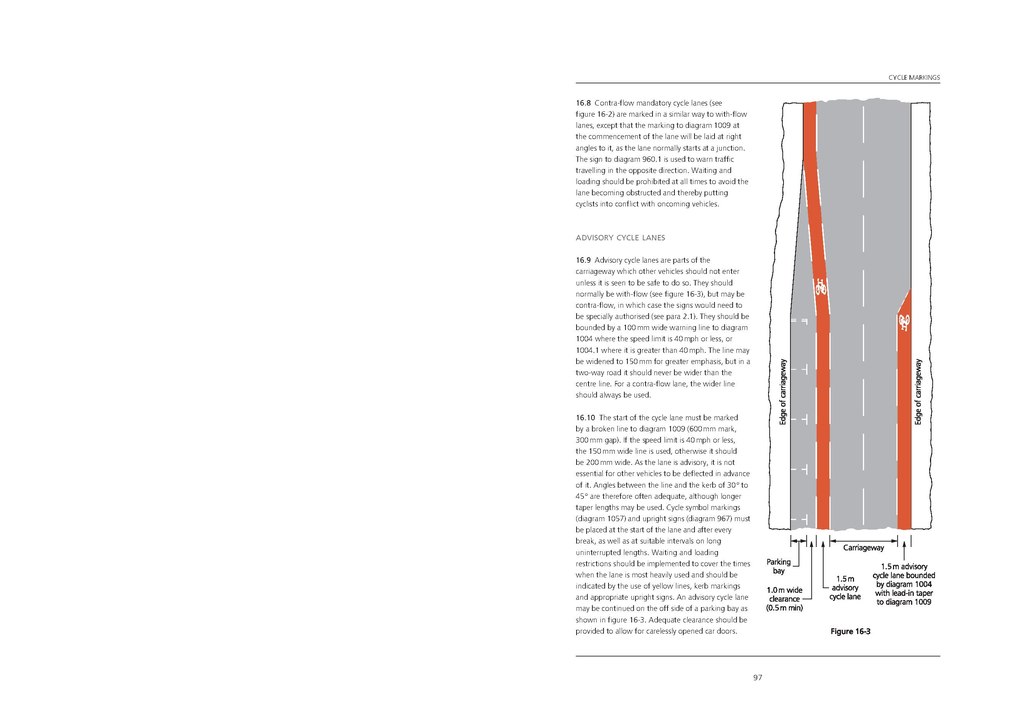16.8 Contra-flow mandatory cycle lanes (see figure 16-2) are marked in a similar way to with-flow lanes, except that the marking to diagram 1009 at the commencement of the lane will be laid at right angles to it, as the lane normally starts at a junction. The sign to diagram 960.1 is used to warn traffic travelling in the opposite direction. Waiting and loading should be prohibited at all times to avoid the lane becoming obstructed and thereby putting cyclists into conflict with oncoming vehicles.

ADVISORY CYCLE LANES
16.9 Advisory cycle lanes are parts of the carriageway which other vehicles should not enter unless it is seen to be safe to do so. They should normally be with-flow (see figure 16-3), but may be contra-flow, in which case the signs would need to be specially authorised (see para 2.1). They should be bounded by a 100 mm wide warning line to diagram 1004 where the speed limit is 40 mph or less, or 1004.1 where it is greater than 40 mph. The line may be widened to 150 mm for greater emphasis, but in a two-way road it should never be wider than the centre line. For a contra-flow lane, the wider line should always be used.
16.10 The start of the cycle lane must be marked by a broken line to diagram 1009 (600 mm mark, 300 mm gap). If the speed limit is 40 mph or less, the 150 mm wide line is used, otherwise it should be 200 mm wide. As the lane is advisory, it is not essential for other vehicles to be deflected in advance of it. Angles between the line and the kerb of 30º to 45º are therefore often adequate, although longer taper lengths may be used. Cycle symbol markings (diagram 1057) and upright signs (diagram 967) must be placed at the start of the lane and after every break, as well as at suitable intervals on long uninterrupted lengths. Waiting and loading restrictions should be implemented to cover the times when the lane is most heavily used and should be indicated by the use of yellow lines, kerb markings and appropriate upright signs. An advisory cycle lane may be continued on the off side of a parking bay as shown in figure 16-3. Adequate clearance should be provided to allow for carelessly opened car doors.
97
